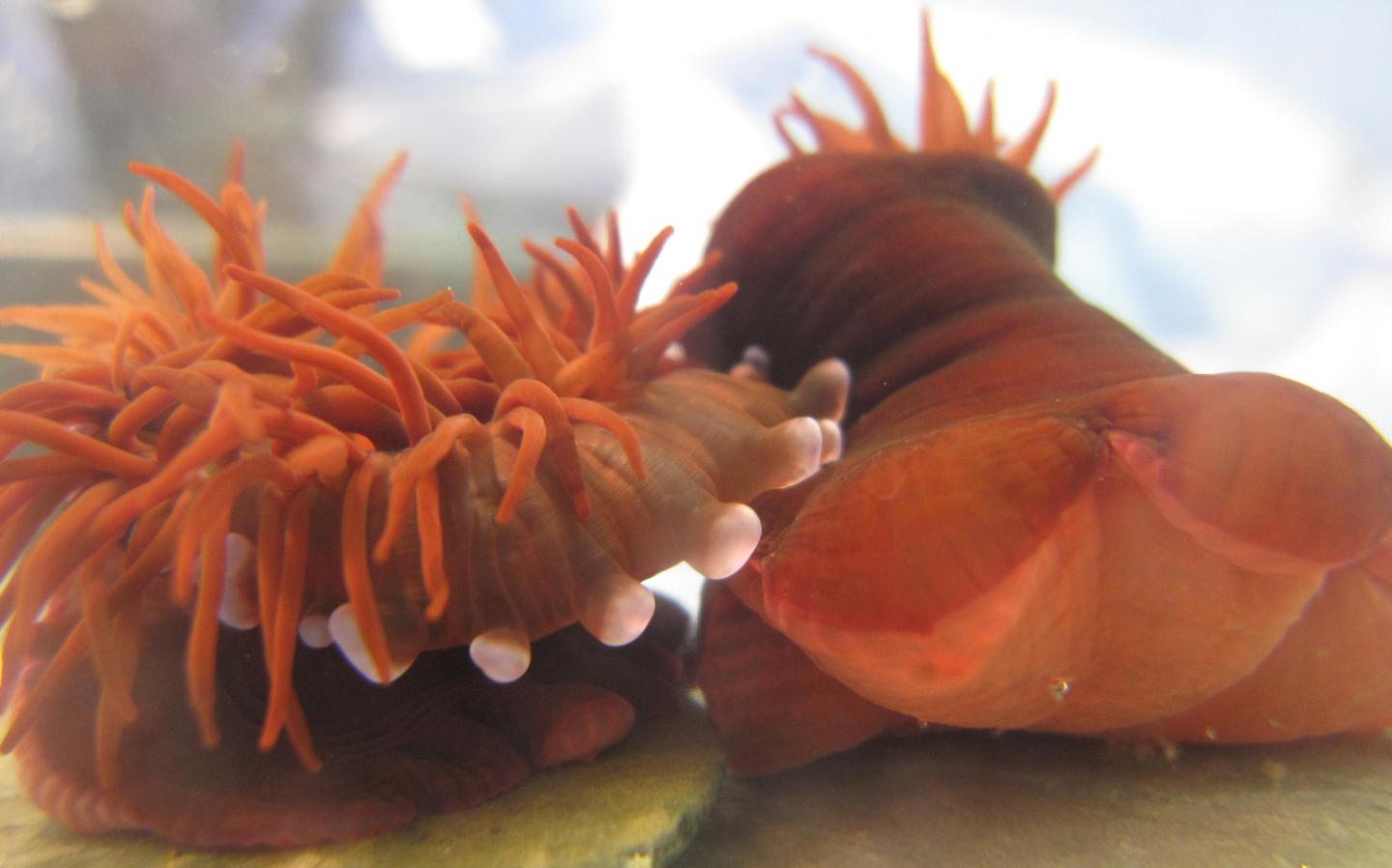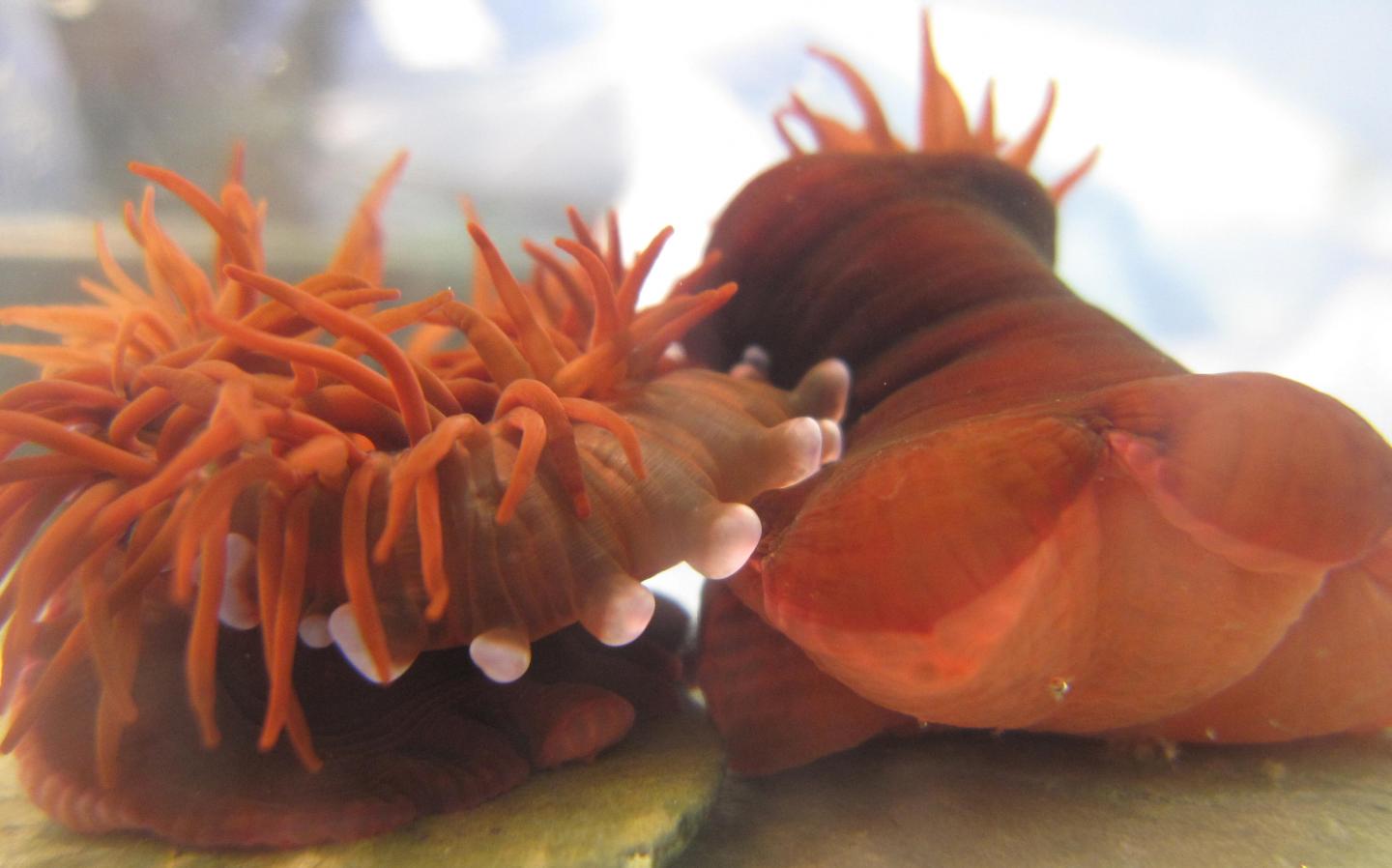
Credit: Fabian Rudin/University of Plymouth
Environmental conditions could play a major role in the instigation of fights within the animal kingdom, according to new research.
Scientists at the University of Plymouth have discovered that different flow regimes and oxygen levels within the marine environment are likely to result in conflict.
Writing in the Journal of Experimental Biology, they say that conditions also play a key role in an individual's resources of strength and stamina and – consequently – their success in such battles.
The study is part of a long-term investigation into the behaviour of sea anemones, funded through a grant from the Biotechnology and Biological Sciences Research Council.
Professor Mark Briffa and Dr Sarah Lane, from the University's Marine Biology and Ecology Research Centre, have previously demonstrated the influence of both immune function and prior experience on the likelihood of fighting success.
They have also shown that creatures who instigate fights are just as likely to suffer long term harm as those defending themselves.
However, the current study could be particularly relevant amid continuing changes to the marine environment brought on by global warming.
Dr Lane, a Post-Doctoral Research Fellow, said: "The coastal environment that these sea anemones live in is rarely stable. We wanted to understand how such changes might affect the fights which take place in the wild. Our results revealed conditions can not only prompt fights but completely alter both an individual's ability to fight and its motivation."
The study focused on the beadlet sea anemone Actinia equina, which is found in large quantities on coastlines across the UK.
Scientists exposed some creatures to decreased levels of oxygen (hypoxia) within tanks and then examined their willingness to fight over a prize they would encounter in the wild, fast-flowing water.
The results showed those anemones who had been living in aerated water were more likely to initiate combat, and more successful in it, than their oxygen-deprived rivals.
However, those housed in hypoxic conditions were still willing to start fights – and succeeded in them – against those from similar conditions.
Professor Briffa, who has been studying animal behaviour within the marine environment for more than 20 years, added: "Typically we think of fighting prowess as an intrinsic trait of individual animals. Our new study shows that external conditions can cause differences in fighting ability, in a way that influences the outcome of a fight and has the potential to be seen throughout the animal kingdom."
###
Media Contact
Alan Williams
[email protected]
44-175-258-8004
@PlymUni
http://www.plymouth.ac.uk
Original Source
https://www.plymouth.ac.uk/news/oxygen-levels-impact-on-species-ability-and-willingness-to-fight http://dx.doi.org/10.1242/jeb.187740





